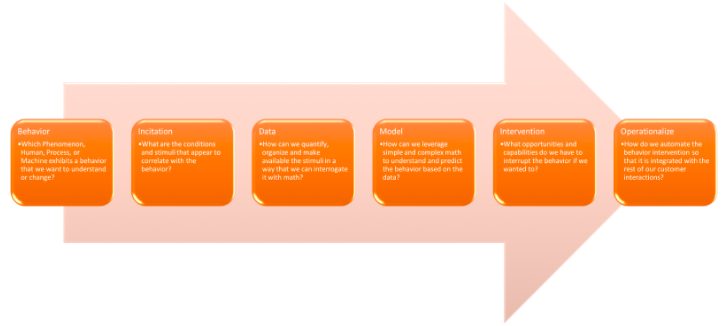In, “Don’t Let Analytic Bureaucracy Dictate Your Pace” I wrote about how creating more analytic bureaucracy was not the best way to increase analytic throughput. I stated, “You can [increase analytic throughput] by reviewing the bottlenecks in your current analytic organizations for ease of data access, concurrency, support of a variety of modern and traditional languages and tools.”
The feedback I received led me to believe that while there was a general acceptance of the opportunity, much of the challenge is in having a common vernacular in what the analytic organization actually does. Recently I shared this HBR article about how important process is to getting value out of modern and emerging modeling techniques like machine learning and so I thought I’d share the model I use to discuss analytic throughput with my customers.

Visualized above, the BIDMIO model is my go-to tool for raising the conversation above a specific tool or output so that we can discuss what the real bottlenecks are in the process of developing new analytic insights (and getting the most value out of them).
While BIDMIO is obviously a shoehorned acronym (it helps me remember the steps) it serves its purpose for me and my customers. Whether you use this model or another it’s important to define the process your analytic organization uses to deliver value. Understanding the high-level steps included in creating and operationalizing new analytic insights is important. My customers have used this model when they are communicating with their “customers” so the analytic organization can demonstrate where the bottlenecks in the process are, and can get help to resolve them.
Once your analytic organization and your “customers” agree on a model to discuss existing and future analytic insight production then you have the opportunity to discuss how to optimize that process. Our team has also seen this model lead to a discussion of whether the insights themselves are the ones most important to the business or is everyone just wrapped up in bureaucracy and status quo.
(Author):
Matt Reubendale
Matt Reubendale is a Business Analytics Leader living in San Jose, CA. He’s spent his career helping business leaders leverage analytics to have significant impacts on their organizations. He’s helped organizations realize the value of statistical, geospatial, machine learning, and emerging analytic practices across retail, supply chain, healthcare and manufacturing.
Follow Matt on Twitter @ImSoSpatial
View all posts by Matt Reubendale